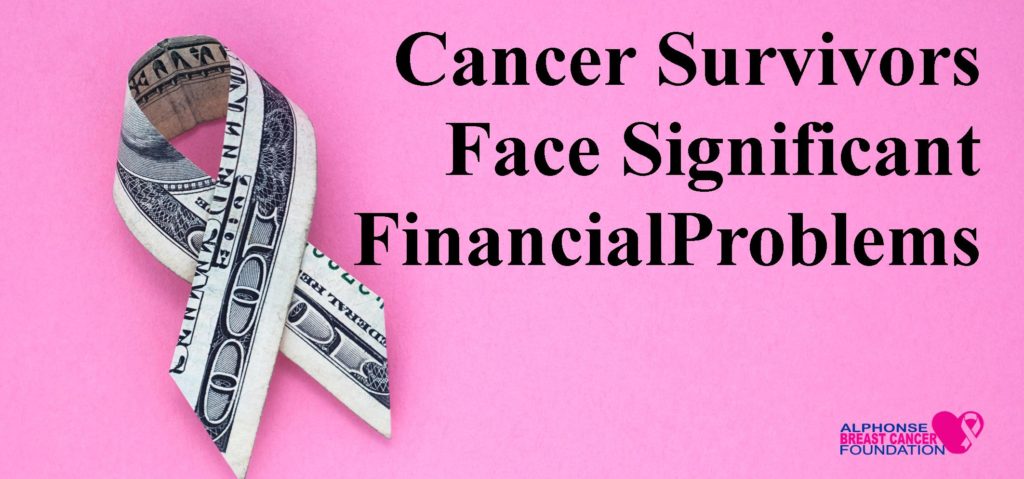Cancer survivors are more likely than people with no cancer history to have money-related problems due to medical bills according to a study published in CANCER, a peer-reviewed journal of the American Cancer Society. The study, published January 21, 2019, says younger survivors faced the greatest financial difficulties. And among survivors with private insurance, those enrolled in high deductible health plans without health savings accounts had greater hardships than those with low deductible insurance.
The researchers defined 3 categories of medical financial hardship: having problems paying medical bills, worrying about paying medical bills, and skipping or delaying medical care because of cost. They studied these categories in different age groups using information from the 2013 to 2016 National Health Interview Survey, which included 10,354 cancer survivors and 124,436 people with no history of cancer.
Younger survivors were harder hit
The hardest hit were cancer survivors age 18 – 49, the youngest age group in the study. More than 43% of them reported problems paying medical bills, compared with about 30% of their peers who did not have a cancer diagnosis. Almost 31% didn’t get or delayed medical care because of the cost compared with almost 22% of their peers.
The study authors say younger cancer survivors may be more likely to be paying off student loans, purchasing first homes, and starting families. They may have a shorter employment history and have had less opportunity to build up savings. They may be more likely to have health insurance coverage provided by their employer, and interruptions in work may cause them to lose coverage.
Medical costs are rising
The study authors point out that cancer-related costs are continuing to increase. The cost of new cancer drugs is often more than $10,000 per month compared with an average of $1,000 per month 20 years ago, and these new drugs frequently are given in combination, making treatment costs even higher. In addition, higher levels of co-insurance, co-payments, and deductibles for privately insured patients means cancer survivors are expected to pay a higher percentage of their cancer-related costs out of their own pocket.
The study found that among privately insured cancer survivors ages 18 – 49, more of those with high deductible health insurance plans and no health savings account reported problems paying medical bills than survivors in the same age group with low deductible health insurance plans (60% vs. 36.8%). They were also more likely to skip or delay medical care (34.6% vs 20.3%). Among privately insured survivors ages 50 – 64 years, those with high deductible health insurance plans and no health savings account were more likely than those with low deductible plans to have problems paying bills (37.3% vs. 24.4%), worry about paying bills (55.9% vs. 42.8%) and skip or delay health care (27.4% vs. 15.5%).
“Identifying patients with medical financial hardship will be important for primary care and oncology care providers,” said Zhiyuan Zheng, PhD, of the American Cancer Society, in a statement. “Developing and evaluating interventions to minimize medical financial hardship will be important for the research community. It may also require attention from health policy makers.”
The high cost of cancer drugs
Research and development costs of bringing new cancer drugs to market are typically used to justify their high prices. These costs include not only the development and studies for the approved drugs themselves, but also drugs that failed in early trials and never made it to market. But according to a new analysis, published January 7, 2019 in JAMA Network Open, the profits for pharmaceutical companies have far outpaced all these drug-related research and development costs.
The study authors, all from the World Health Organization in Geneva, analyzed 99 cancer drugs approved by the US Food and Drug Administration from 1989 to 2017. They found the drugs generated an average $14.50 for every $1 spend on research and development.
The average time it took for a drug to fully recover the maximum possible cost of research and development, which the authors estimated at $2.9 billion, was 5 years. However, cancer drugs continued to generate billions of dollars in profits for pharmaceutical companies even after their patents and marketing rights expired and generic versions were possible.
The study authors argue that the high prices can make it harder for patients to get the most effective treatment and get in the way of competition and innovation in the development of new drugs. They are calling for action to reverse what they call the “unsustainable trend” of increasing prices.

